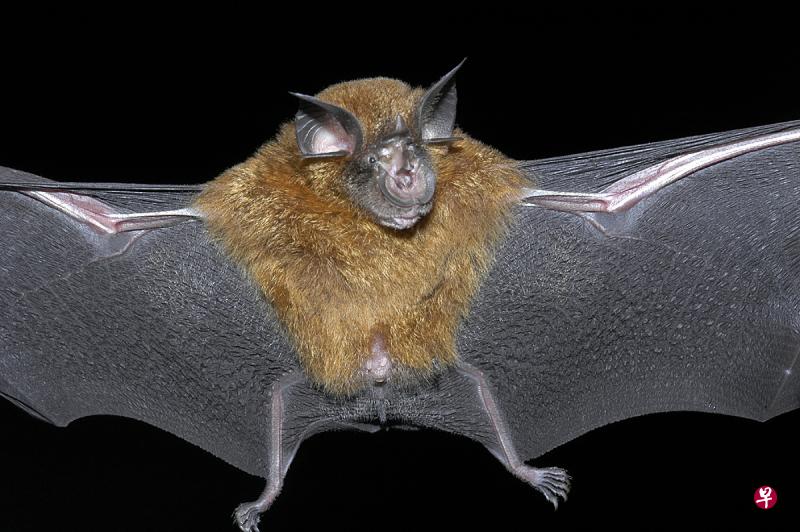钟南山:估计2021年底中国完全可以开放
文章来源: HK01
10/05/2021

始于2019年下半年的新冠肺炎(COVID-19)疫情仍在肆虐,包括西方发达国家在内的大多数国家受其严重困扰而束手无策,中国不仅控制住了本国疫情,而且逐渐实现“群体免疫”,甚至将会在不久后完全对外开放。
被视为中国疫情防控权威专家的钟南山近日表示,“新冠(疫情暴发)到现在为止,中国走的路还是对的。当然,以后我们还会遇到更多的变异(病毒),怎么办?这都要探讨,但是总的指导思想是以预防为主,这是不变的。”
他还透露称,“什么时候中国完全可以开放?绝大多数人打了疫苗,起码80%甚至85%以上,我估计到2021年底就在80%以上了。”
另外,钟南山还提及美国等西方国家强烈主张的新冠病毒溯源活动时称,“这一次新冠病毒溯源,特别是美国把它政治化了。”
“对付疾病的最好方法就是健康,就是以预防为主。早发现、早诊断、早检测、早治疗,这是最高的医术。”
根据中国官方信息,目前中国累计确诊124,772例,死亡5,692人。2021年10月2日0至24时,31个省级地区新增本土病例2例。
根据美国公开数据,美国目前病例总数约有4,360万人,死亡70.1万人。
Events…
预告一周北美法律公益讲座安排
10/04/2021
时间:周二到周五 晚间
5:30-7:00(西部时间)8:30-9:30(东部 时间)
重播:第二天
上午9:00(西部时间)
中午:12:00(东部时间)
周二: 蒋律师讲遗嘱和需要注意的问题
周三: 数据泄露和个人身份保护&事业机会说明会
周四:北美常见法律问题案例分享(主讲:Joanna,Irene)
周五:律师讲人身伤害如何索赔
Zoom 6045004698
密码:请扫码进群索取
另外:周三6:30(西部时间)美国专场(Michael Wang 主讲)
Zoom 95190929213
密码请扫码进群索取。

钟南山:不可长期采取最严格冠病防控方法
来自 / 联合早报
10/03/2021

(广州讯)中国工程院院士钟南山认为,长期采取最严格的冠病防控方法不可行;病毒在变,应对的技术指导思想也要变。
据《南方人物周刊》报道,钟南山在受访时介绍说,中国从2020年1月开始,一直都采用强力手段应对疫情。现在依旧严防严控,是因为疫苗接种率还没有达到80%以上。到现在为止,中国走的路还是对的。
不过这位中国顶级呼吸系统疾病专家指出,长期这样下去,采取最严格的防控方法是不行的,国家的负担很大。病毒在变,应对的技术指导思想也在变。
谈及中国何时可完全开放时,钟南山说至少要80%甚至85%以上的民众完成接种疫苗以后。他补充说,要各国、特别是大国的传染情况较低,接种比率较高,死亡率降低的情况下,中国才可以完全开放。
他估计,中国在年底时接种率能达到80%以上,但问题是接种疫苗半年后,预防效率会明显下降。
所以现在正研发更多疫苗,以及如何加强免疫来解决这个问题。由于全是未知数,主要的指导思想还是预防。
钟南山还认为,现在各国合作抗疫的道路不太顺畅,特别是美国把冠病溯源政治化,一旦先入为主,就无法合作。总的来说,现在国际合作还不够。
钟南山团队最新研究发现:新冠病毒中间宿主可能是啮齿类动物
来源:第一财经
9/20/2021
众多研究表明,新冠病毒(SARS-CoV-2)的自然宿主很可能是蝙蝠,但其中间宿主存在着多种可能,例如蛇、穿山甲、水貂甚至猫,但至今尚未确定新冠病毒的中间宿主到底是什么。
近日,由钟南山院士牵头、专职于过敏反应与免疫研究的呼吸疾病国家重点实验室、广州医科大学附属第二医院陶爱林教授组织的研究团队在Healthcare杂志发表了题为《SARS-CoV-2: Origin, Intermediate Host and Allergenicity Features and Hypotheses》的论文。
该研究试图破解新冠病毒的中间宿主来源和过敏原性,以及这种病毒是如何出现的,它将如何及何时消失。结果显示,啮齿动物可能是SARS-CoV和SARS-CoV-2向人传播的中间宿主。
为了确定人SARS-CoV-2的中间宿主,研究者以人SARS-CoV-2刺突糖蛋白的滑动肽为扫描窗,对整个生物数据库进行了扫描和比对。结果表明,有17个鼠源性多肽片段与人SARS-CoV-2刺激性糖蛋白完全匹配。研究者进一步在NCBI BLAST参考蛋白文库和非冗余蛋白序列文库中验证了这些片段,结果显示有7个片段是大鼠特异性多肽,只存在于小鼠数据库(Mus或Rattus)而不存在于其他哺乳动物数据库。通过对蛋白质文库的整体蛋白质组学扫描,发现特征片段HAIHVSGT在褐家鼠和小鼠中特异存在。因此,啮齿动物可能是SARS-CoV和SARS-CoV-2向人传播的中间宿主。
这是当前关于新冠病毒中间宿主的一个全新发现,这个研究开展了一个关于“病毒感染种群的自限性假说”。
陶爱林团队认为,当一个新的冠状病毒突变后,某一类或几类特定MHC基因型的个体成为易感个体,当易感个体消亡或者获得免疫自愈后,那些占绝大多数无症状个体和感染后的痊愈个体依然带着该突变病毒,这种新病毒就在种群内部流传而不引起疾病流行;当条件合适时,病毒累积的突变达到一定程度,会使得另一类MHC基因型的个体染病,从而进入下一个流行季,如此开始群体内新的循环。当病毒获得了跨种间传播的突变,则在新种内一样开始演变为染病-流行-无症状携带的逐步平衡。此规律在包括人在内的哺乳动物和其他动物中莫不如此。当病毒获得了跨种间传播的突变且累积到与全部MHC位点发生强结合时,即成为超级病毒,这种超级病毒对该种群存在灭绝的威力,但该超级病毒也会随着该种群的灭绝而消失。
在经过20个月研究后,陶爱林团队最终证实了这个假说。
该研究通过对新型病毒的刺突蛋白的滑动序列片段进行全面的氨基酸序列分析,证实蝙蝠是新型冠状病毒SARS-CoV-2的天然宿主,再通过啮齿动物传递给人类。同时,通过过敏原性对比分析发现,新型冠状病毒SARS-CoV-2和2002-2003年在广东爆发的SARS病毒即SARS-CoV表现出相似的致敏性,但二者之间具有不同的HLA等位基因-多肽结合力,提示两种病毒特定感染的人群不同,症状相似但不同。通过对与多肽具有高结合力的HLA I类5个位点和II类9个位点在人群中的比例,得到:在没有任何干预的情况下,约7.36%的中国人感染新冠病毒后症状明显,而92%的人即使感染却不显示症状或症状不明显。不同国家的不同基因型分布频率不同,感染率和重症率也有所差异,感染新冠后如未经干预,约4.68%的美国人将显示严重症状,而感染不显示症状的人群约为95%——这类无症状的个体是病毒得以长期存在并传播的客观条件,而且,由于这类个体即使感染了病毒也不会启动后续的炎症反应,没有明显症状,因此,其接种效应不明显,但疫苗接种后往往容易会将这部分人群统计算入疫苗接种成功的人群。
研究者结合该实验室在2011~2012年对SARS病毒抗体的群体调查数据,认为:冠状病毒在人群中存在,在全体人群成功免疫之前,不会在人群中消失。如果该研究的结论正确,老鼠作为中间宿主成为事实,猫、老鼠等与人类密切接触动物携带冠状病毒与并进行传播,那么,冠状病毒在人群中将难以灭绝。
研究者建议,采用过敏原性弱化了的弱病毒进行提前免疫方能抵御强病毒,天花与牛痘的实例就是这一措施的重要实证。全基因组抗原均进行了过敏原性弱化后的疫苗将是安全的、有效的疫苗,这将是未来新冠疫苗的新目标。其次,建议联合监测特殊气象因素的变化和病毒变异,并早期接种低过敏原性病毒,将是对抗该病毒的理想预防方式。
研究:老挝蝙蝠携带的病毒最接近冠病原始毒株
文 / 陈慧璋
9/18/2021

(早报讯)研究人员发现,栖息在老挝北部石灰岩洞穴里的蝙蝠携带的冠状病毒,与严重急性呼吸综合征冠状病毒2(SARS-CoV-2,即冠病原始毒株)具有共同的关键特征。
彭博社报道,这一发现让科学家对2019冠状病毒疾病(Covid-19)的起因再靠近一步。
法国巴斯德研究所和老挝大学的研究人员在数百只马蹄蝠中寻找与导致冠病相似的冠状病毒,并发现了三个紧密匹配的受体结合域。
这项论文报告周五(17日)刊登在《自然》期刊。研究人员在报告中指出,自然界中存在着与SARS-CoV-2密切相关的病毒,这些病毒来自某些蝙蝠种类包括几种中华菊头蝠(Rhinolophus)。中华菊头蝠又称马蹄蝠(horseshoe bat)。
这项研究为冠病大流行始于蝙蝠传播病毒的假设提供了支持。
9月14日发布的另一项研究显示,在中国南部和东南亚一些中华菊头蝠的密集栖息地,每天可能发生大约1000起此类感染病例。
巴斯德研究所病原体发现负责人兼论文合著者埃洛伊特(Marc Eloit)说,在老挝发现的三种病毒——BANAL-52、BANAL-103和BANAL-236,是“迄今为止最接近SARS-CoV-2的祖先病毒。”
埃洛伊特说:“这些病毒可能促成了SARS-CoV-2的起源,并可能在本质上构成未来直接传播给人类的风险。”
Bats in Laos caves found to carry coronaviruses that share key feature with Sars-CoV-2
9/18/2021

VIENTIANE (BLOOMBERG) – Bats dwelling in limestone caves in northern Laos were found to carry coronaviruses that share a key feature with Sars-CoV-2, moving scientists closer to pinpointing the cause of Covid-19.
Researchers at France’s Pasteur Institute and the University of Laos looked for viruses similar to the one that causes Covid-19 among hundreds of horseshoe bats.
They found three with closely matched receptor binding domains – the part of the coronavirus’ spike protein used to bind to human ACE-2, the enzyme it targets to cause an infection.
The finding, reported in a paper released on Friday (Sept 17) that is under consideration for publication by Nature journal, shows that viruses closely related to Sars-CoV-2 exist in nature, including in several Rhinolophus, or horseshoe bat, species.
The research supports the hypothesis that the pandemic began from a spillover of a bat-borne virus.
About 1,000 such infections may be occurring daily in southern China and South-east Asia in areas with dense populations of bats from the Rhinolophus genus, a study on Tuesday found.
The three viruses found in Laos, dubbed BANAL-52, BANAL-103, and BANAL-236, are “the closest ancestors of Sars-CoV-2 known to date”, said Dr Marc Eloit, head of pathogen discovery at the Pasteur Institute in Paris, and co-authors.
“These viruses may have contributed to Sars-CoV-2’s origin and may intrinsically pose a future risk of direct transmission to humans.”
The receptor binding domains of three Laos coronaviruses are closer to that of Sars-CoV-2 than to the RaTG13 virus identified in Rhinopholus affinis bats from the Mojiang mineshaft in Yunnan province, that was regarded as the pandemic strain’s closest match.
The BANAL-236 virus has an almost identical receptor binding domain to the pandemic virus, according to the paper.
“The receptor binding domain of Sars-CoV-2 looked unusual when it was first discovered because there were so few viruses to compare it to,” said Dr Edward Holmes, an evolutionary biologist at the University of Sydney, who was not involved in the research.
Tracing ancestors
“Now that we are sampling more from nature, we are starting to find these closely related bits of gene sequence,” Dr Holmes said in an e-mail on Saturday. “Eventually, with more sampling, the natural ancestry of the entire Sars-CoV-2 genome will be revealed.”
None of the bat viruses isolated in Laos harbours a so-called furin cleavage site in the spike that facilitates cell entry. It is a feature of the Sars-CoV-2 virus that has led some scientists to theorise that it was created in a laboratory.
No evidence supporting the lab-leak theory has emerged. Last month, the United States intelligence community ruled out the possibility that Sars-CoV-2 was developed by China as a biological weapon, but no consensus was reached on its origin.
The lack of furin cleavage may be explained by insufficient sampling in bats, or by acquisition of the furin cleavage site during chains of transmission in an alternate animal host, or during unreported circulation in humans in the early stages of the outbreak when the virus may have caused few symptoms, the authors said.
“Our results pinpoint the presence of new bat sarbecoviruses that seem to have the same potential for infecting humans as early strains of Sars-CoV-2,” they said.
Guano collectors
People who spend time in or close to caves, such as guano collectors, are particularly at risk of being exposed.
Further investigations are needed to assess if people exposed to bats have been infected by one of these viruses and whether they have antibodies that may provide protection against subsequent Sars-CoV-2 infections.
“This paper is really interesting and we need more research like it,” said Dr Maria Van Kerkhove, the World Health Organisation’s technical lead for Covid-19, in an e-mail.
The researchers studied 645 bats from 46 species captured on four sites – in Fueng and Meth districts of Vientiane province, and in Namor and Xay districts in Oudomxay province – between July last year and January this year.
The bats live in the limestone karstic terrain common to China, Laos, and Vietnam in the Indochina peninsula.
The paper highlights the diversity of Sars-CoV-2-like viruses present in bats in South-east Asia, Dr Holmes said.
“Continual sampling is the only way to understand the origins of this virus and it is important that more sampling is done throughout China as this remains the most likely place of origin,” he said.
“This study emphasises that bat coronaviruses that have the potential to infect humans readily exist in nature and could emerge at any point. This is the clear risk for the future.”



